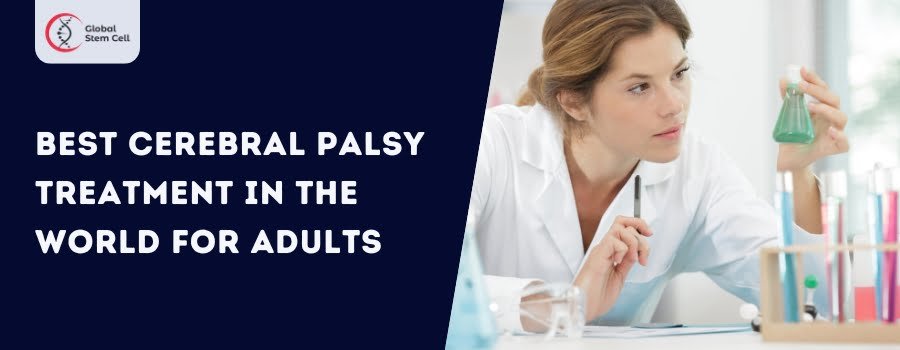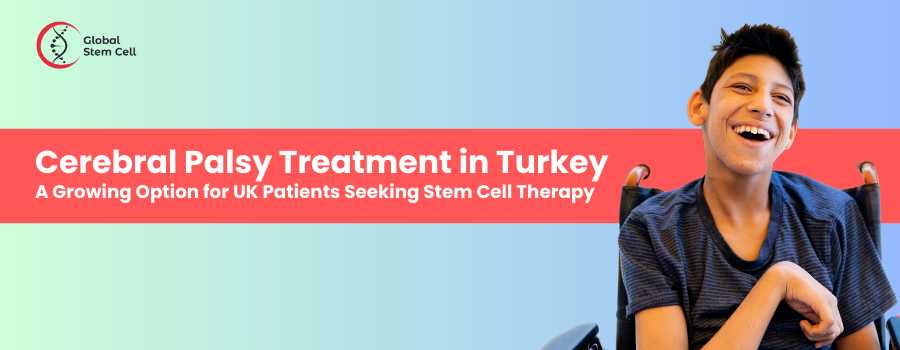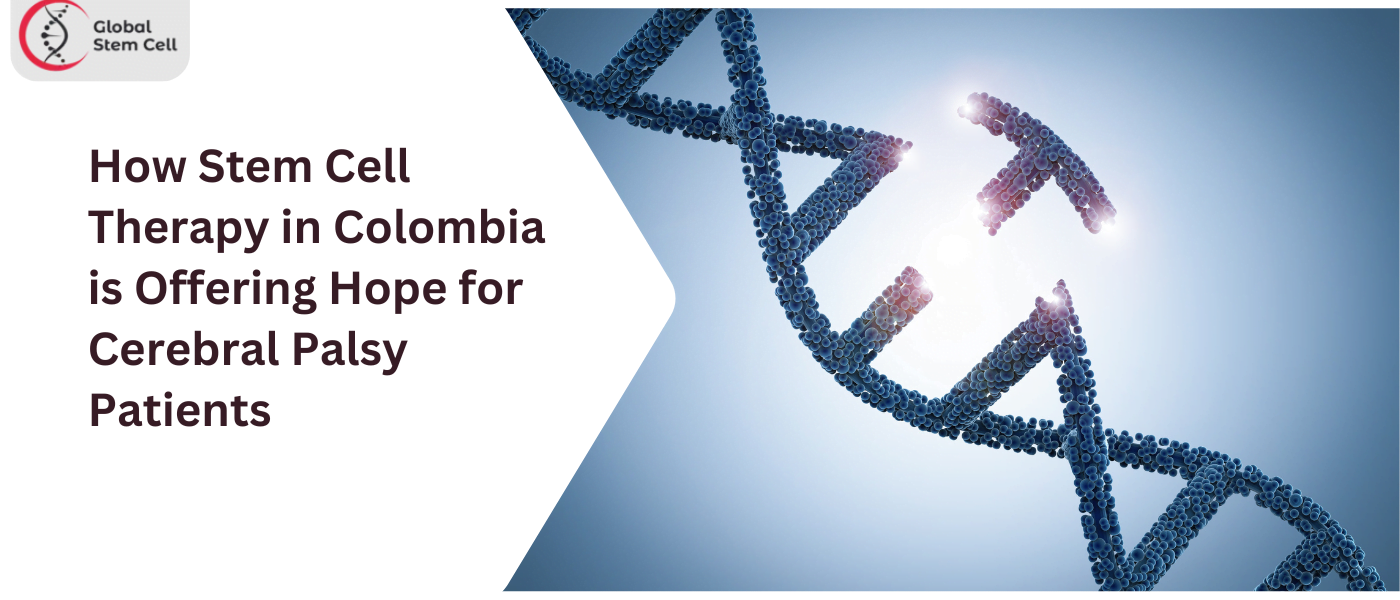
Cerebral palsy is a condition that affects people’s movement and coordination. It’s something that stays with people as they grow up, which is why finding the best treatment for adults is so important. In this blog post, we’ll explore the journey of finding the best treatments available globally for adults living with cerebral palsy.
We’ll start by looking at what cerebral palsy is and why treating it effectively matters. Then, we’ll see how treatments have changed over time and what makes today’s treatments so effective. We’ll also talk about some of the best places in the world for getting treatment and the different kinds of therapies they offer.
Table of Content
Challenges faced by adults living with cerebral palsy
- Access to Healthcare: Many adults with cerebral palsy face challenges in accessing specialized healthcare services tailored to their needs. This can be due to limited availability of knowledgeable healthcare professionals, lack of appropriate facilities, or financial constraints.
- Physical Limitations: Cerebral palsy can lead to a range of physical limitations, including mobility issues, muscle stiffness, and difficulty with fine motor skills. These challenges may impact activities of daily living, such as dressing, eating, and personal hygiene.
- Employment and Education: Adults with cerebral palsy often encounter obstacles in pursuing education and employment opportunities. Discrimination, inaccessible workplaces, and a lack of accommodations can hinder their ability to fully participate in the workforce or educational institutions.
- Social Stigma and Isolation: Negative attitudes and misconceptions about cerebral palsy can contribute to social stigma and isolation for adults living with the condition. This can lead to feelings of loneliness, exclusion, and low self-esteem.
- Mental Health Issues: Managing the physical challenges of cerebral palsy alongside societal barriers can take a toll on mental health. Adults with cerebral palsy may experience higher rates of anxiety, depression, and stress compared to the general population.
- Financial Strain: The costs associated with medical care, assistive devices, and therapies can place a significant financial burden on individuals and families affected by cerebral palsy. Limited access to financial resources or insurance coverage can exacerbate this strain.
- Transitioning to Adulthood: The transition from pediatric to adult healthcare services can be challenging for individuals with cerebral palsy. This period of transition may involve changes in care providers, navigating new support systems, and adjusting to adult responsibilities.
- Accessible Housing and Transportation: Finding suitable housing and transportation options that accommodate the needs of individuals with cerebral palsy can be difficult. Limited accessibility in public spaces and transportation can restrict independence and mobility.
- Lack of Social Support: Building and maintaining social networks can be challenging for adults with cerebral palsy, particularly if they face communication difficulties or mobility limitations. A lack of social support can impact mental well-being and quality of life.
- Aging-related Concerns: As adults with cerebral palsy age, they may experience additional health complications and challenges related to aging, such as increased risk of musculoskeletal problems, chronic pain, and degenerative conditions.
Stem Cell Treatment for Cerebral Palsy
Stem cell therapy involves the use of specialized cells, known as stem cells, to repair damaged tissues, promote regeneration, and modulate the immune response. These remarkable cells have the unique ability to transform into various cell types within the body, offering the potential to address a wide range of medical conditions, including cerebral palsy.
How Does Stem Cell Therapy Work for Cerebral Palsy?
In the context of cerebral palsy, stem cell therapy aims to harness the regenerative properties of stem cells to repair or replace damaged cells within the brain and central nervous system. By targeting the underlying neurological deficits associated with cerebral palsy, stem cell treatment holds the promise of improving motor function, reducing spasticity, and enhancing overall quality of life for affected individuals.
Types of Stem Cells Used in Treatment
Mesenchymal Stem Cells (MSCs): Derived from various sources such as bone marrow, adipose tissue, or umbilical cord blood, MSCs have shown potential in promoting tissue repair, reducing inflammation, and modulating immune responses.
Neural Stem Cells: These specialized cells have the ability to differentiate into neurons and glial cells, the building blocks of the central nervous system. Neural stem cell therapy aims to replenish damaged neural tissues and enhance neural connectivity in individuals with cerebral palsy.
Induced Pluripotent Stem Cells (iPSCs): Generated by reprogramming adult cells to a pluripotent state, iPSCs offer the advantage of patient-specific therapy, minimizing the risk of immune rejection and graft-versus-host reactions.
Benefits of Stem Cell Therapy for Cerebral Palsy
- Regeneration of Neural Tissues: Stem cell treatment holds the potential to stimulate the growth of new neurons and repair damaged neural circuits within the brain, leading to improvements in motor function and mobility.
- Reduction of Spasticity: Spasticity, a common symptom of cerebral palsy characterized by muscle stiffness and involuntary contractions, may be alleviated through the anti-inflammatory and immunomodulatory effects of stem cells.
- Enhanced Neuroplasticity: Stem cell therapy may promote neuroplasticity, the brain’s ability to reorganize and form new connections, thereby facilitating learning and motor skill development in individuals with cerebral palsy.
- Improved Quality of Life: By addressing the underlying pathology of cerebral palsy and promoting functional improvements, stem cell treatment has the potential to enhance the overall quality of life for affected individuals and their families.
Leading Stem Cell Treatment Centers Worldwide
Across the globe, several renowned medical centers have distinguished themselves as leaders in the field of regenerative medicine, pioneering groundbreaking research and delivering cutting-edge stem cell treatments. Let’s delve into some of the leading stem cell treatment centers worldwide:
Vega Stem Cell Clinic in Bangkok, Thailand
Located in the heart of Bangkok, Vega Stem Cell Clinic is renowned for its cutting-edge stem cell therapies and world-class medical care. Led by a team of experienced physicians and researchers, the clinic offers personalized treatment plans tailored to each patient’s specific needs.
Using advanced stem cell technologies and adhering to rigorous safety standards, Vega Stem Cell Clinic specializes in addressing a wide range of medical conditions, including neurological disorders, orthopedic injuries, and autoimmune diseases.
SPORTMED Stem Cell Clinic in Guadalajara, Mexico
SPORTMED Clinic in Guadalajara, Mexico, is a premier destination for individuals seeking innovative stem cell therapies to address sports injuries, musculoskeletal conditions, and degenerative joint diseases.
With a focus on regenerative medicine and sports rehabilitation, the clinic boasts state-of-the-art facilities and a multidisciplinary team of experts dedicated to delivering exceptional patient care. SPORTMED’s holistic approach combines stem cell treatments with physiotherapy, nutrition counseling, and personalized exercise programs to optimize outcomes and promote long-term wellness.
Kobinia Med in Vienna, Austria
Kobinia Med in Vienna, Austria, stands out as a leading center for regenerative medicine and stem cell therapy in Europe. With a commitment to excellence and scientific innovation, Kobinia Med offers advanced treatments for a variety of conditions, including neurological disorders, autoimmune diseases, and chronic pain syndromes.
The clinic’s team of specialists includes renowned researchers and clinicians who employ state-of-the-art techniques to harness the healing potential of stem cells and promote tissue regeneration.
Stem Health in Guadalajara, Mexico
Stem Health in Guadalajara, Mexico, is dedicated to providing comprehensive stem cell therapies for individuals seeking alternative solutions for chronic conditions and degenerative diseases.
With a focus on patient-centered care and medical excellence, Stem Health offers a range of regenerative treatments targeting orthopedic injuries, neurological disorders, and autoimmune conditions.
The clinic’s experienced medical team utilizes cutting-edge stem cell technologies and adheres to stringent quality and safety standards to ensure optimal outcomes for every patient.
Kyron Stem Cells in Colombia
Kyron Stem Cells in Colombia is a leading center for stem cell therapy, renowned for its commitment to innovation, research, and patient care. Specializing in regenerative medicine and cellular therapy, Kyron Stem Cells offers personalized treatment plans tailored to each patient’s unique needs and medical history.
The clinic’s state-of-the-art facilities and team of skilled professionals strive to deliver safe and effective stem cell therapies for a variety of conditions, including neurological disorders, cardiovascular diseases, and degenerative joint conditions.
StemRx Bioscience Solutions in Mumbai, India
StemRx Bioscience Solutions in Mumbai, India, is at the forefront of regenerative medicine, offering advanced stem cell therapies for a diverse range of medical conditions.
Led by a team of experienced physicians and scientists, StemRx Bioscience Solutions utilizes cutting-edge stem cell technologies and innovative treatment protocols to address neurological disorders, orthopedic injuries, autoimmune diseases, and more.
Committed to patient safety and clinical excellence, the clinic adheres to strict regulatory standards and continuously strives to push the boundaries of stem cell research and therapy.
Procedure of Stem Cell Treatment for Cerebral Palsy
Stem cell treatment for cerebral palsy holds promise as a potential therapeutic option for improving motor function, reducing spasticity, and enhancing overall quality of life in affected individuals. While research in this field is ongoing, the procedure typically involves several key steps:
- Patient Evaluation and Consultation: The process begins with a thorough evaluation of the patient’s medical history, neurological status, and functional abilities. A comprehensive consultation with a healthcare provider specializing in stem cell therapy is conducted to discuss treatment options, potential risks and benefits, and expectations.
- Pre-Treatment Assessment: Prior to the stem cell procedure, the patient undergoes various diagnostic tests and assessments to evaluate their overall health and suitability for treatment. These may include imaging studies (such as MRI or CT scans), blood tests, and physical examinations to assess baseline motor function and identify areas of impairment.
- Stem Cell Source Selection: Stem cells used in cerebral palsy treatment can be sourced from different tissues, including bone marrow, adipose (fat) tissue, umbilical cord blood, or induced pluripotent stem cells (iPSCs). The choice of stem cell source depends on factors such as availability, safety, ethical considerations, and the patient’s specific needs.
- Stem Cell Harvesting: Depending on the selected source, the stem cells are harvested from the patient’s own body (autologous) or from a donor (allogeneic). Common methods of harvesting include bone marrow aspiration, liposuction for adipose tissue extraction, or collection from umbilical cord blood or placental tissue.
- Processing and Preparation: Once harvested, the stem cells undergo processing and preparation in a specialized laboratory to isolate and concentrate the desired cell population. This may involve purification, expansion, and quality control procedures to ensure the viability and potency of the stem cells for therapeutic use.
- Administration of Stem Cells: The prepared stem cells are then administered to the patient via the chosen delivery route. Common routes of administration include intravenous (IV) infusion, intra-arterial injection, intrathecal injection (into the spinal canal), or direct injection into targeted tissues or organs.
- Post-Treatment Monitoring and Follow-Up: Following stem cell administration, patients are closely monitored for any adverse reactions or complications. Regular follow-up appointments are scheduled to assess treatment response, track improvements in motor function and spasticity, and adjust therapy as needed. Physical therapy, occupational therapy, and other rehabilitative interventions may be incorporated to optimize outcomes and support long-term recovery.
FAQs about Stem Cell Treatment for Cerebral Palsy
How does stem cell therapy work for cerebral palsy?
Stem cell therapy aims to harness the regenerative properties of stem cells to repair damaged neural tissues within the brain and central nervous system. By targeting the underlying neurological deficits associated with cerebral palsy, stem cell treatment holds the promise of promoting tissue regeneration and functional improvements.
What types of stem cells are used in cerebral palsy treatment?
Stem cells used in cerebral palsy treatment may include mesenchymal stem cells (MSCs), neural stem cells, induced pluripotent stem cells (iPSCs), and others. These stem cells can be sourced from various tissues, such as bone marrow, adipose tissue, umbilical cord blood, or placental tissue.
What are the potential benefits of stem cell therapy for cerebral palsy?
Potential benefits of stem cell therapy for cerebral palsy may include improved motor function, reduced spasticity, enhanced neuroplasticity, and enhanced quality of life. Stem cell treatment holds the potential to address the underlying pathology of cerebral palsy and promote tissue repair and regeneration.
Is stem cell treatment for cerebral palsy safe?
While stem cell therapy for cerebral palsy shows promise, it is still considered an investigational and experimental approach. The safety and efficacy of stem cell treatment are subject to ongoing research and clinical trials. Patients considering stem cell therapy should consult with qualified healthcare professionals and participate in clinical trials when available.
Are there any risks or side effects associated with stem cell therapy for cerebral palsy?
Like any medical procedure, stem cell therapy carries potential risks and side effects, including infection, allergic reactions, and graft-versus-host disease (in the case of allogeneic stem cell transplantation). Patients should discuss the potential risks and benefits of stem cell treatment with their healthcare provider.
Ready to explore the potential of stem cell treatment for cerebral palsy? Take the next step towards improved mobility and quality of life. Contact us today to learn more and schedule your consultation!





